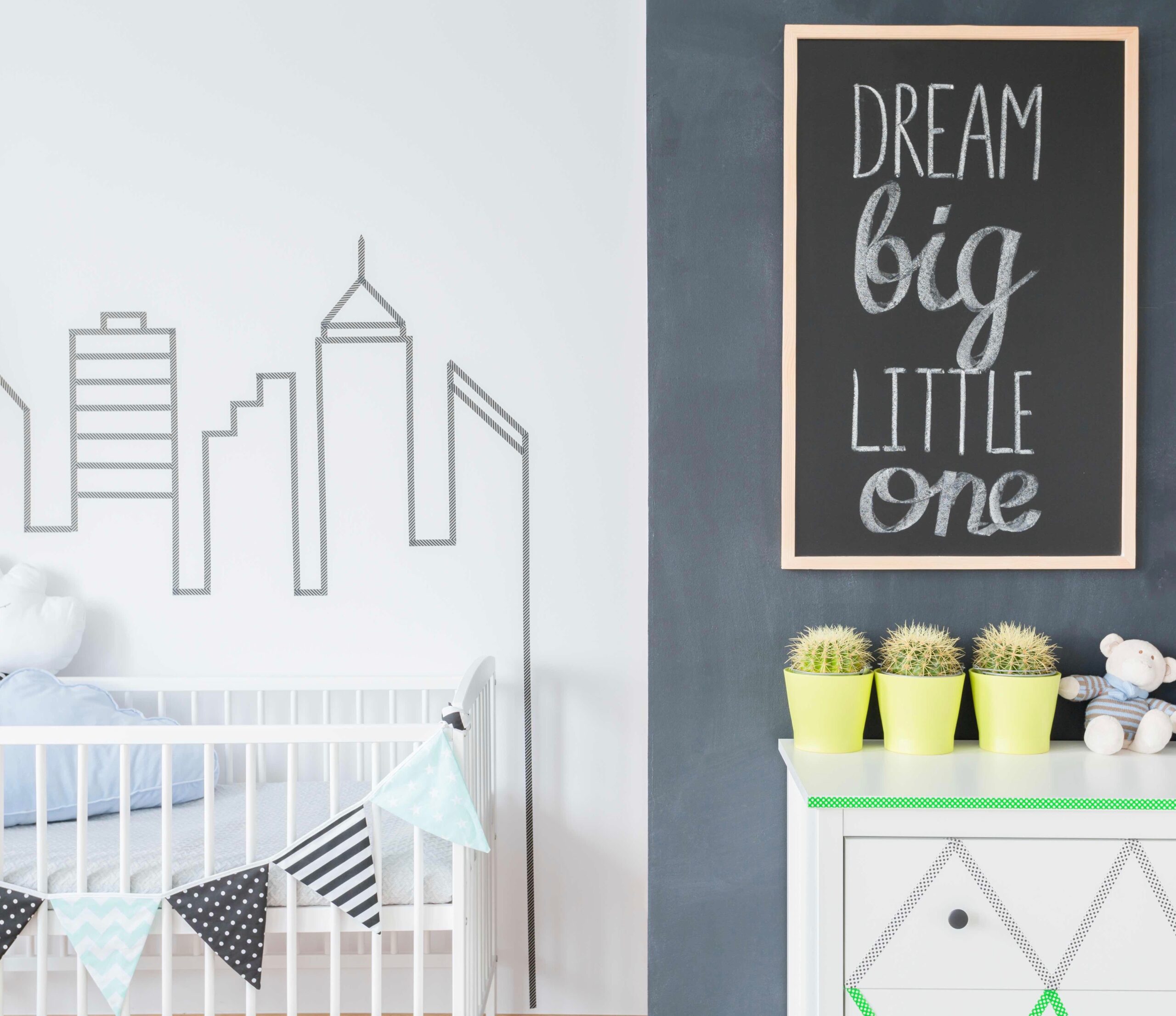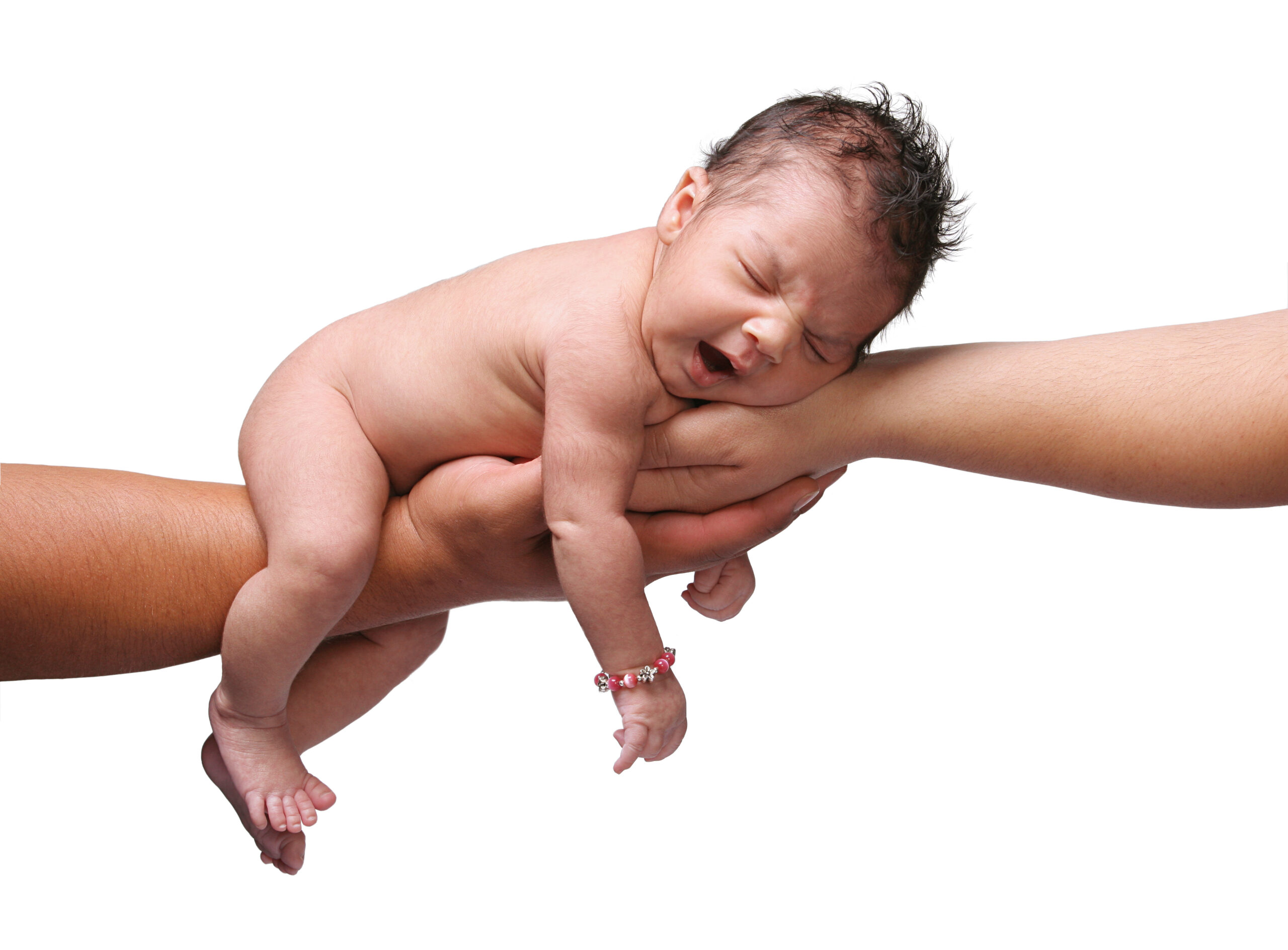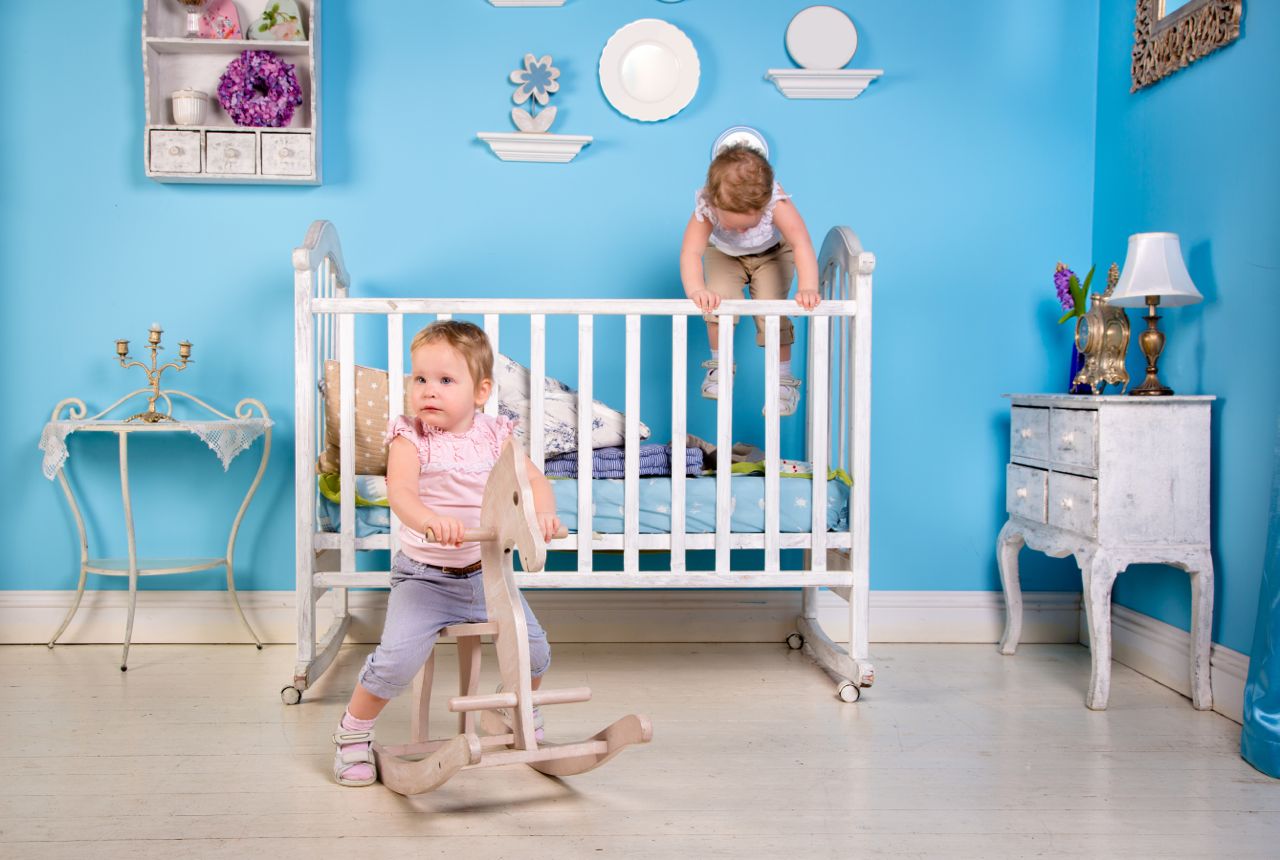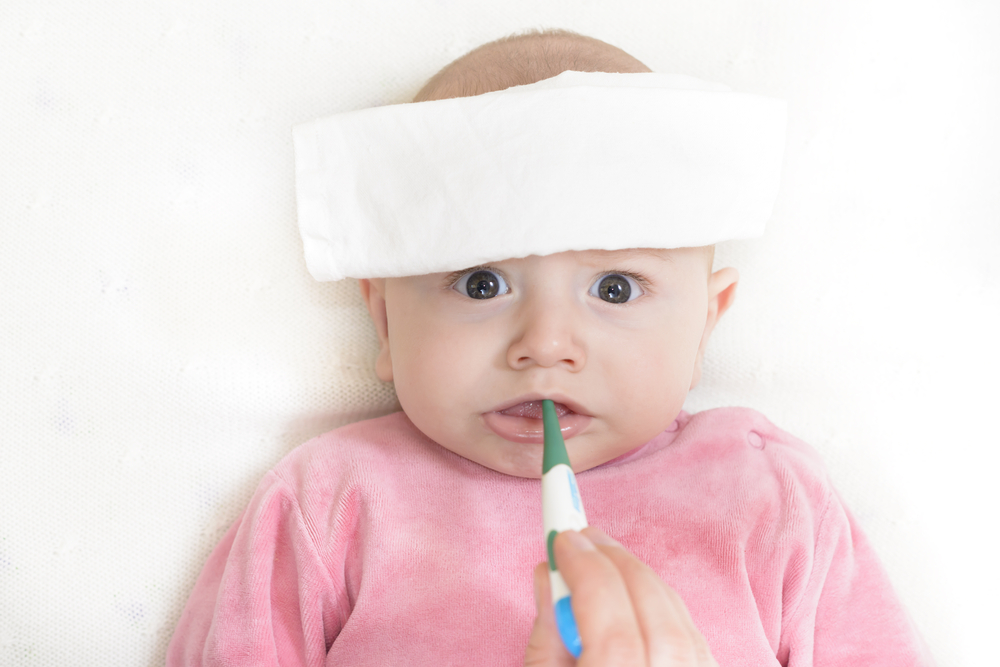Decorating the nursery isn’t just fun – it’s also important for a baby’s development. According to baby vision researchers you can enhance a child’s visual development by giving her a rich and interesting environment and tailoring it to the stage of her development. So, go ahead and get that expensive wall hanging or fuzzy rug.
Mobiles
Slow moving mobiles help your baby practice following objects with her eyes. You may sometimes see your very young infant stare at an object for some time before she grabs it because newborns “reach-to-grasp” machinery is primitive. But with experience from that awesome, slowly-rotating toy you hung, she will not even have to look at it as she reaches, because her vision, touch, and motor coordination machinery will have wired itself together.1 Especially if the toy is made of narwhals or snazzy unicorn-dinosaur hybrids.
Night light
Don’t worry about keeping the room dark in the first few months. A one month-old baby needs fifty times more illumination to detect the presence of light than an adult needs. The photoreceptors in their retina haven’t developed. So, it doesn’t really help your baby sleep to keep the lights low in the nursery. The only thing you’ll likely accomplish is stubbing your toes and bruising your shins. Even at three months, babies still need ten times as much light to see properly. So you have some time to shop for the perfect night light.
Stuff with shapes
Babies love to look at the edges of stuff. They rely on the borders of objects and high contrast areas of 2-dimensional patterns to identify things. In fact, when looking at a human face, a newborn looks at the hairline. In one experiment, French scientists showed four-day-old infants pictures of their mother’s face and those of strangers. This experiment was especially cool because by using photos it eliminated the possibility that the baby was using smell or sound to identify Mom. The researchers found that the newborns looked longer at the photo of Mom than of a stranger. Researchers then put head scarves on the subjects and discovered that babies couldn’t distinguish their mom from a stranger.2 However, once they were about 2 months old they start to pay more attention to facial features. So older infants are not fooled by such minor alterations in Mom’s appearance.
The lesson here? If you want your newborn to recognize you – no head scarves, fake beards, rubber noses, etc. But you should choose edgy nursery decor with patterns and shapes that have distinct edges for them to inspect.
Babies develop their vision through experience.
The brain’s pre-wired visual pathways need exposure to light and moving objects to create the complex sense that we call vision. What babies “see” is very different from what parents see. We take for granted that we can synthesize color and the movement of objects to keep track of what is around us. Babies on the other hand are very nearsighted and they don’t always see something if it is moving too quickly. Researchers say babies have a visual “speed limit”. So, newborns need experience seeing stuff to become less nearsighted, be able to see moving objects and for their brains to learn the very complex task of combining color, movement, and timing into a single object.
Color palette
Newborn’s eyes are relatively insensitive to color. At birth, babies easily distinguish high contrast colors like black and white and they are great at seeing various shades of gray. By about a week of age they can perceive some colors—red, orange, yellow and green. But it takes a full five months before they can see subtle differences between orange and red-orange for example and can see blue and violet or pastel colors. So, although color is somewhat irrelevant to your newborn, hanging a vividly colored picture in the nursery may make the nursery decor more attractive, and it gives them a chance to inspect subtle colors.
Minimalist or extravagant?
Whether the baby is surrounded by white walls and minimalist art, or an over-the-top enchanted forest decor, a baby will filter the amount of information streaming into his senses to optimize his learning on his own. Researchers call this the Goldilocks Effect, in which babies ignore scenes that are too simple or too complex, concentrating on those that are just right. This effect is surprising, because you’d expect that babies would be more interested in the most complex scenes.
In a key study3 demonstrating the Goldilocks Effect, researchers showed babies video animations of objects such as a pacifier or ball being revealed from behind colorful boxes. Over dozens of trials, they varied where and when the objects would appear.
They tracked the babies’ gaze, and as they expected, the babies lost interest when the video became too predictable. But to the researchers’ surprise, the babies’ attention also diverted from the screen when the events became too surprising—random and unpredictable. The researchers concluded that babies can “decide” when their learning time is being wasted by too-simple or too-complex scenes.
This finding doesn’t mean you should try to tailor your baby’s environment to be “just right,” said the researchers. Give them an interesting and stimulating environment, and they’ll decide what to pay attention to and what to ignore.
Want to know more? Read: What babies can actually see or How a baby would childproof their home
References
1 Sacrey, Lori-Ann R. , Karl, Jenni M., and Whishaw, Ian Q. “Development of visual and somatosensory attention of the reach-to-eat movement in human infants aged 6 to 12 months,” Exp Brain Res http://www.ncbi.nlm.nih.gov/pubmed/22948738
2 Pascalis, Olivier, et al. “Mother’s face recognition by neonates: A replication and an extension.” Infant Behavior and Development 18.1 (1995): 79-85.
3 The Goldilocks Effect: Human Infants Allocate Attention to Visual Sequences That Are Neither Too Simple Nor Too Complex http://www.plosone.org/article/info%3Adoi%2F10.1371%2Fjournal.pone.0036399






